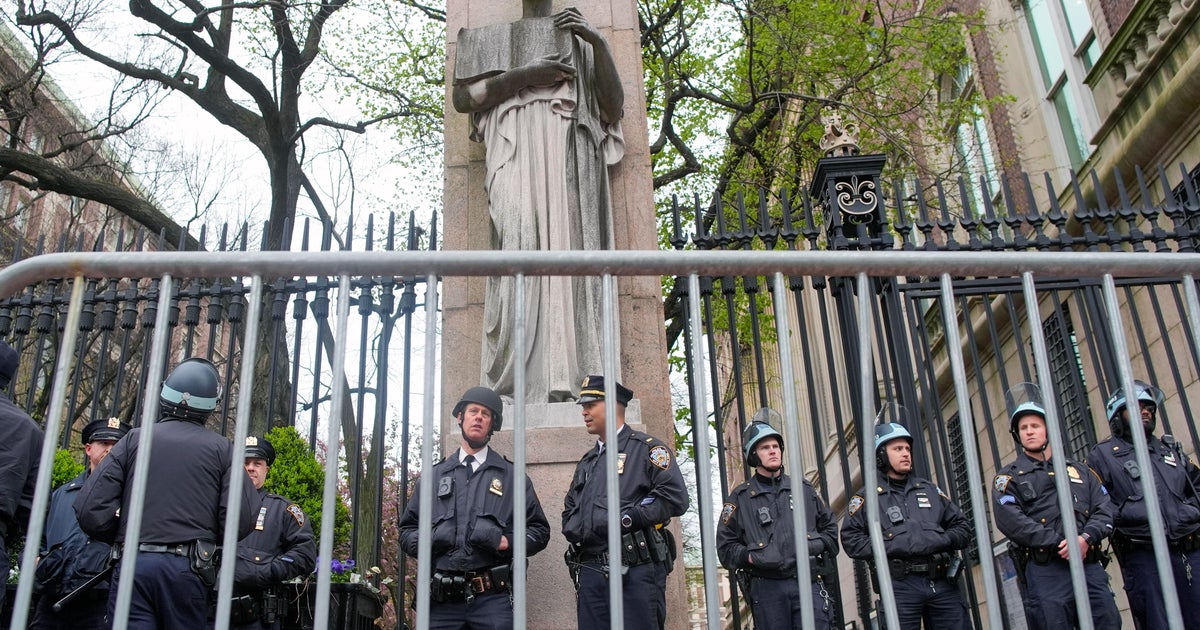Report: Sandy Was Second-Costliest Hurricane In History, Winds Felt As Far As Wisconsin
NEW YORK (CBSNewYork/AP) - Superstorm Sandy not only caused destruction up and down the East Coast, it also created wind gusts as far west as Wisconsin and as far north as Canada.
The extent of Sandy's devastation is detailed in a report released Tuesday by the National Hurricane Center.
It describes Sandy's beginnings as a tropical wave off the coast of Africa on Oct. 11 that reached the Caribbean a week later. It temporarily weakened below hurricane strength while passing Cuba, then regained hurricane strength as it approached the U.S. on October 27.
Sandy made landfall on Oct. 29 near Brigantine, N.J.
According to the report, Sandy was an "extraordinarily large hurricane."
WEB EXTRA: Read The NHC Report (pdf)
The report attributes 72 deaths in the U.S. directly to Sandy, from Maryland to New Hampshire. That's more than any hurricane to hit the northeastern U.S. since Hurricane Agnes killed 122 people in 1972.
The report counts at least 87 more deaths indirectly tied to the storm, from causes such as hypothermia due to power outages and accidents during cleanup efforts.
In addition to the wind gusts the storm spawned, Sandy caused water levels to rise along the entire east coast, from Florida to Maine.
"The highest storm surges and greatest inundation on land occurred in the states of New Jersey, New York, and Connecticut, especially in and around the New York City metropolitan area," the report said.
The highest storm surge measured by tide gauges in New Jersey was 8.5 feet over normal levels at Sandy Hook. The highest surge in New York was more than 12.5 feet at Kings Point on the western edge of Long Island Sound.
Nationwide, Sandy damaged or destroyed about 650,000 homes and knocked out power to 8.5 million customers, according to the report.
Last month, Congress approved a $50.5 billion federal aid package to assist Sandy victims and the recovery effort.
"Sandy is expected to rank as the second-costliest cyclone on record, after Hurricane Katrina of 2005, and will probably be the sixth-costliest cyclone when adjusting for inflation, population and wealth normalization factors," the report said.
The National Hurricane Center drafts reports for every hurricane and tropical storm from the past season.
In the aftermath of Sandy, the National Weather Service is looking at possible changes to their warning system for future storms.
"The first proposal originates from the unique situation posed by Hurricane Sandy; it would give the NHC the option to continue issuing formal advisories on post-tropical cyclones as long as those systems pose a significant threat to life and property, and it would give the NWS the option to keep hurricane and tropical storm watches and warnings in place for those systems," the report said.
The other proposal, set to go into effect in 2015, would allow the NWS to issue storm surge watches and warnings.
(TM and © Copyright 2013 CBS Radio Inc. and its relevant subsidiaries. CBS RADIO and EYE Logo TM and Copyright 2013 CBS Broadcasting Inc. Used under license. All Rights Reserved. This material may not be published, broadcast, rewritten, or redistributed. The Associated Press contributed to this report.)



